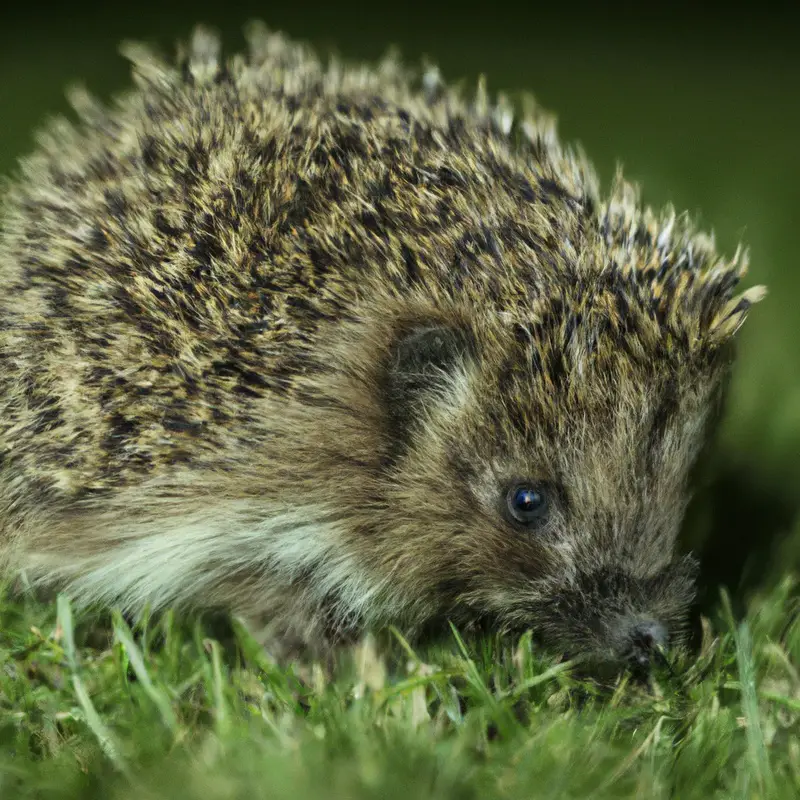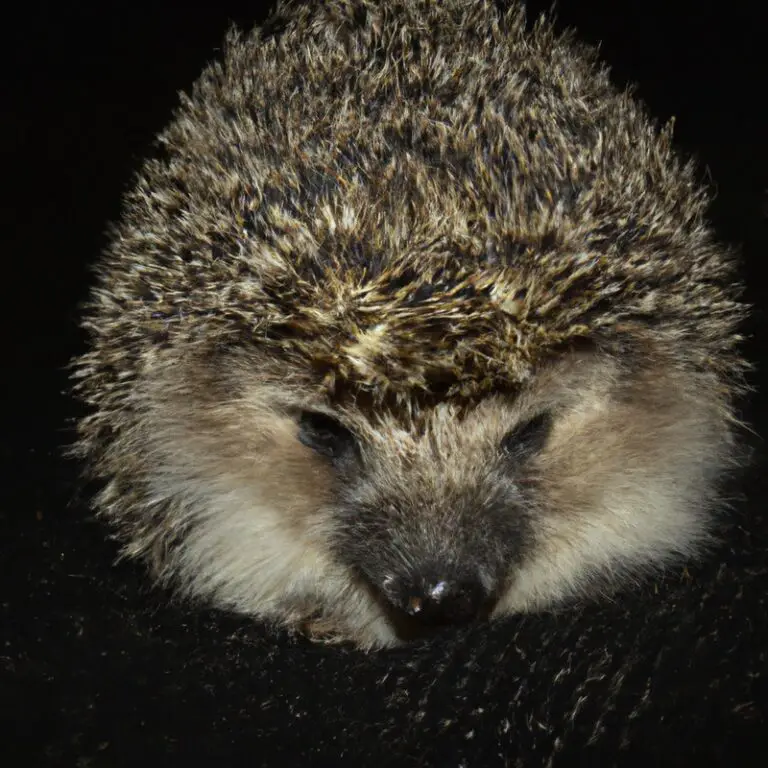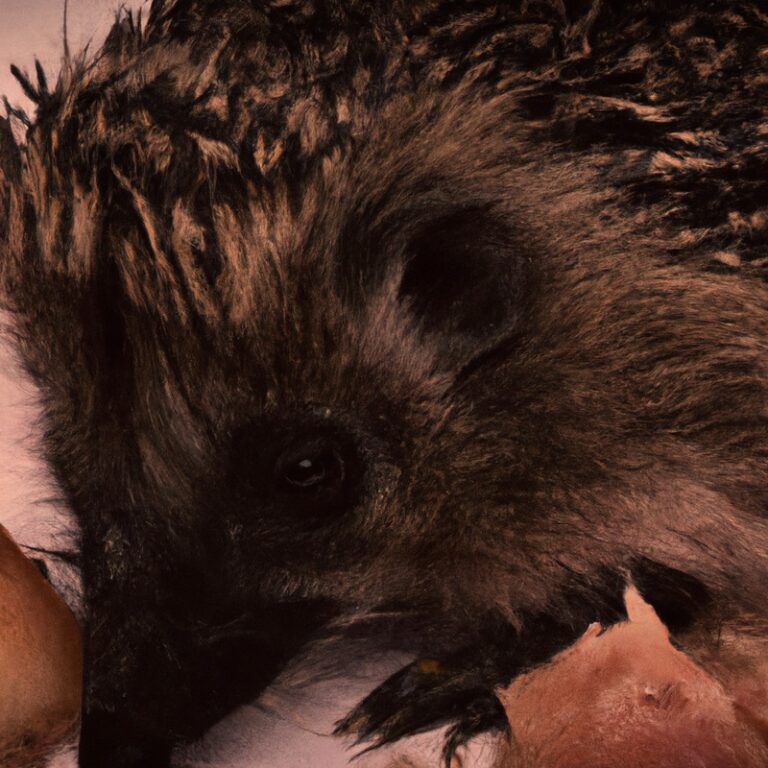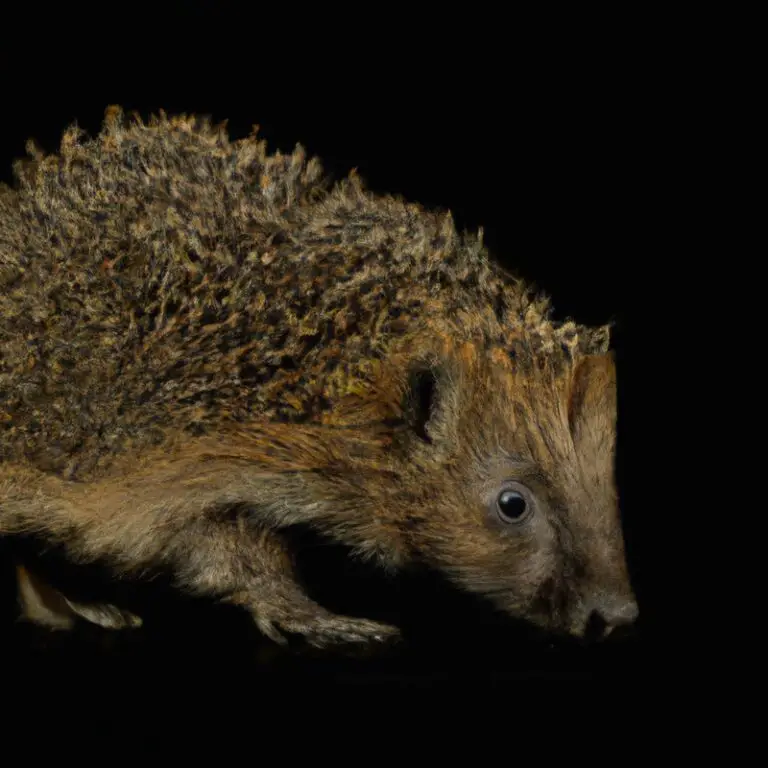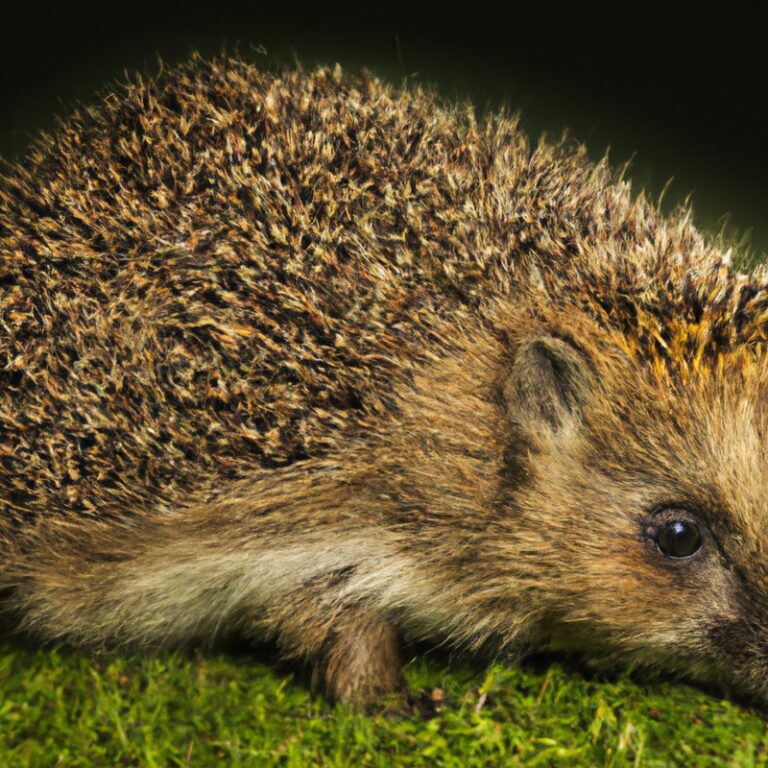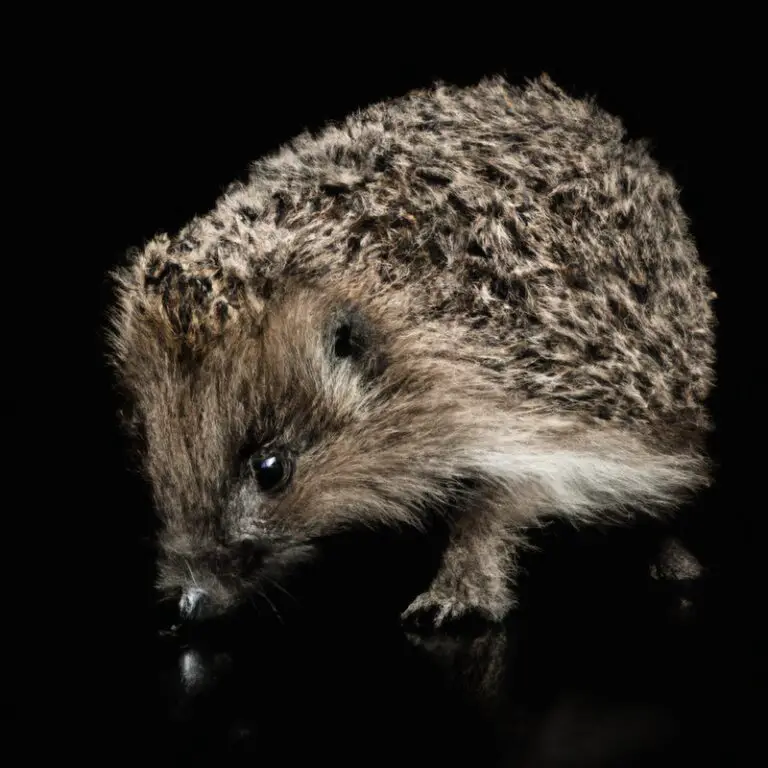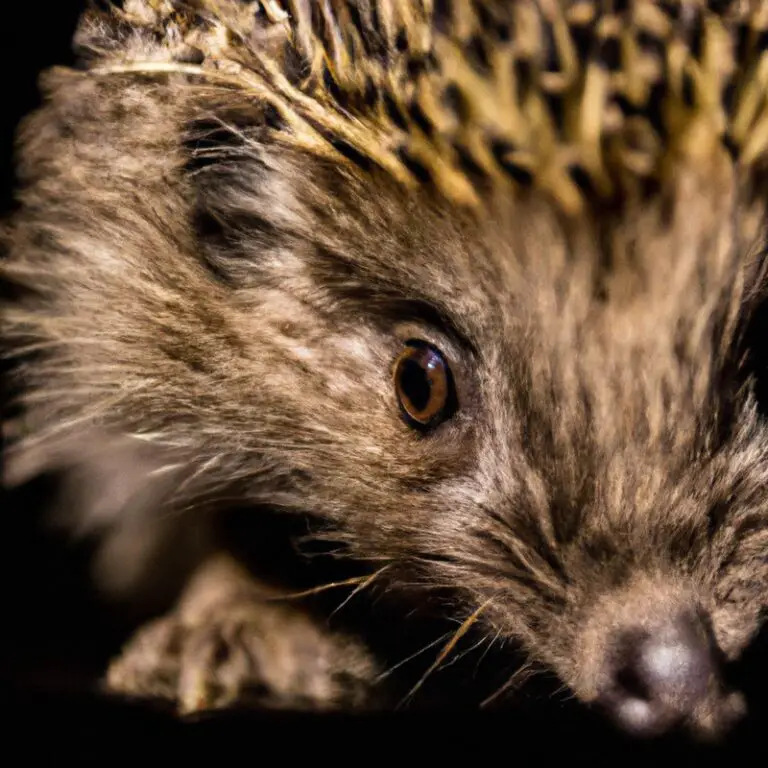What Is The Cultural Significance Of Hedgehogs?
Key Takeaways:
- Hedgehogs have cultural significance in various societies, representing attributes like wisdom, protection, and resilience.
- Hedgehogs have appeared in ancient myths, folklore, and literature, symbolizing different meanings across different cultures.
- The popularity of hedgehogs as pets has grown in recent years, showcasing their ability to foster companionship and connection.
- Conservation efforts are crucial for hedgehog populations due to their cultural importance and ecological contributions as natural pest controllers.
Have you ever wondered why hedgehogs have become such beloved creatures across different cultures?
These small, spiky mammals hold a surprising amount of cultural significance, making appearances in myths, folklore, literature, and even as adorable pets.
From Greek mythology to Native American legends, hedgehogs have captivated our imaginations and become symbols of various beliefs and values.
Not only that, but they’ve also left their mark on art, superstitions, and our modern popular culture.
In this article, we’ll delve into the fascinating cultural world of hedgehogs, exploring their symbolism, their role in literature and art, their popularity as pets, and even their conservation efforts.
So, keep reading and get ready to uncover the captivating cultural significance of hedgehogs!
| Aspect | Cultural Significance of Hedgehogs |
| Historical Beliefs | Considered sacred and associated with good fortune in some cultures |
| Symbolism | Symbol of protection, self-defense, and adaptability |
| Literature and Folklore | Depicted in various children’s stories, fables, and folklore tales |
| Art and Design | Hedgehog motifs used in decorative arts and crafts |
| Mascots and Characters | Popular as mascots and characters in cartoons and video games |
| Conservation | Considered an indicator species for healthy ecosystems |
| Popularity as Pets | Increasing trend of keeping hedgehogs as pets |
The Symbolism of Hedgehogs in Different Cultures
Hedgehogs hold symbolic meaning in various cultures.
Hedgehogs in Greek Mythology
In Greek mythology, hedgehogs were often associated with fertility and protection.
The goddess Aphrodite would sometimes be depicted with a hedgehog by her side, symbolizing her role as the protector of love and fertility.
Additionally, the hedgehog’s ability to roll into a spiky ball was seen as a defensive mechanism, representing the idea of protection and self-defense.
The presence of hedgehogs in Greek mythology highlights their significance in ancient Greek culture and beliefs.
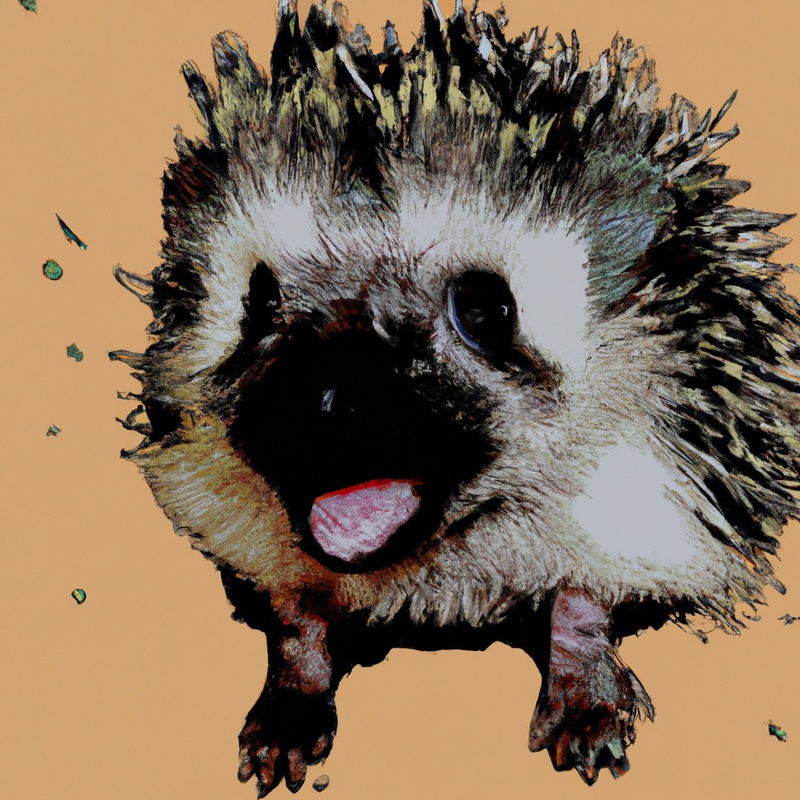
Hedgehogs in Native American Culture
Hedgehogs hold significance in Native American culture. They are often seen as powerful protectors and bringers of good fortune.
In some tribes, they are believed to have the ability to ward off negative energy and evil spirits.
The appearance of a hedgehog is seen as a positive omen, symbolizing resilience, adaptability, and self-defense. They are also associated with agility and resourcefulness, traits highly respected in Native American communities.
Hedgehogs in Japanese Folklore
Hedgehogs have a significant presence in Japanese folklore.
In Japanese mythology, the hedgehog is believed to possess magical powers, such as the ability to ward off evil spirits and bring good luck.
The spines of the hedgehog are thought to symbolize protection and defense.
In some stories, hedgehogs are portrayed as clever and resourceful creatures that outsmart their enemies.
They have also been associated with agricultural fertility and protection of crops.
Overall, hedgehogs hold a special place in Japanese folklore and are often regarded as symbols of good fortune and safety.
Hedgehogs in African Traditions
Hedgehogs hold a special place in African traditions and folklore. In some African cultures, the hedgehog is believed to have the ability to ward off evil spirits and protect against negative energy.
They are also considered symbols of protection, wisdom, and resourcefulness.
In certain rituals and ceremonies, the image or likeness of a hedgehog is used to bring luck and ensure the success of various endeavors. Hedgehogs are seen as respected creatures in African traditions, celebrated for their unique traits and symbolism.
Hedgehogs in Literature and Art
Hedgehogs have made their mark in literature and art, with famous characters in novels and children’s stories, as well as being depicted as artistic subjects.
Famous Hedgehog Characters in Literature
There are several famous hedgehog characters in literature that have captured the hearts of readers.
One notable example is Sonic the Hedgehog, who first appeared in a video game but later became the star of books and comics.
Another beloved hedgehog character is Mrs.
Tiggy-Winkle from Beatrix Potter’s children’s books.
This friendly little hedgehog is known for her helpful nature and tidy housekeeping skills.
These iconic hedgehog characters have become cultural symbols, representing speed, adventure, and kindness.
Hedgehogs in Children’s Stories and Fables
Hedgehogs have held a special place in children’s stories and fables throughout history. They often represent qualities such as bravery, resourcefulness, and defense mechanisms.
In these tales, hedgehogs are portrayed as clever and able to protect themselves from danger.
They serve as relatable and likable characters, teaching young readers valuable life lessons. Some popular examples include Mrs.
Tiggy-Winkle from Beatrix Potter’s “The Tale of Mrs.
Tiggy-Winkle” and the hedgehog in Aesop’s fable “The Hare and the Hedgehog.”
Hedgehogs as Artistic Subjects
Hedgehogs have long been popular subjects in art, appearing in various forms of visual expression. Artists have depicted these charming creatures in paintings, drawings, and sculptures, showcasing their unique appearance and endearing qualities.
Hedgehogs are often portrayed in a whimsical and playful manner, emphasizing their spiny quills and adorable faces.
Their symbolism varies, but they are commonly associated with resilience, protection, and independence. From ancient cave paintings to contemporary art, hedgehogs serve as delightful artistic subjects that captivate our imaginations.
Hedgehogs as Pets and Cultural Icons
Hedgehogs have gained popularity as pets and become cultural icons due to their unique appearance and charming personalities.
The Rise of Hedgehogs as Popular Pets
Hedgehogs have recently gained popularity as pets due to their unique appearance and low-maintenance nature. Their rise in popularity can be attributed to their small size, easy care requirements, and their adorable quills.
Hedgehogs can be kept in small spaces, making them suitable for apartment living.
They also require minimal grooming and are generally quiet and independent pets. The trend of keeping hedgehogs as pets has grown rapidly, with more and more people drawn to their charm and quirky personalities.
Hedgehogs in Popular Culture and Media
Hedgehogs have found their way into popular culture and media in various ways. They often appear in children’s books, movies, and TV shows, such as the beloved character “Sonic the Hedgehog.” Hedgehogs are also depicted in cartoons and video games, adding a cute and quirky element.
In addition, their unique appearance and prickly exterior are often used as symbols of protection or resilience, making them popular choices for mascots and logos.
From entertainment to symbolism, hedgehogs have made their mark in popular culture.
Hedgehogs in Branding and Advertising
Hedgehogs have become popular figures in branding and advertising due to their unique appearance and personality.
Their cute and prickly image appeals to a wide range of audiences, allowing companies to use them as mascots or symbols of their brand.
Hedgehogs are often associated with qualities like resilience, curiosity, and protection, which can be effectively communicated through advertising campaigns.
Additionally, their popularity as pets has contributed to their presence in marketing, as people have developed an emotional connection with these adorable creatures.
Incorporating hedgehogs in branding and advertising can help businesses create a memorable and relatable image for their products or services.
Hedgehogs in Superstitions and Folklore
Hedgehogs have played significant roles in superstitions and folklore throughout different cultures.
Hedgehog Superstitions in Different Cultures
Hedgehogs have been associated with different superstitions in various cultures.
In English folklore, they were believed to bring good luck and protect against evil spirits.
In Greek mythology, they represented vigilance and intelligence.
In some African cultures, hedgehogs were considered symbols of transformation and fertility.
Similarly, in Native American traditions, they were seen as bringers of good fortune.
These superstitions highlight the cultural significance of hedgehogs and how they have been perceived and celebrated in different parts of the world.
Hedgehogs as Omens and Symbols
Hedgehogs have often been seen as symbols and omens in various cultures throughout history.
In some traditions, they are associated with protection, defense, and self-preservation due to their characteristic spines.
The hedgehog’s ability to curl into a tight ball has also been interpreted as a symbol of adaptability and resilience.
Additionally, in certain folklore beliefs, the hedgehog is thought to possess wisdom and insight.
Its nocturnal nature and elusive behavior have led to associations with secrets and hidden knowledge.
Overall, hedgehogs hold a significant place in cultural symbolism and are seen as mystical creatures with special meanings.
Legends and Folklore Surrounding Hedgehogs
Legends and Folklore Surrounding Hedgehogs Hedgehogs have long been a source of fascination in legends and folklore around the world.
In some cultures, they are believed to bring good luck and protection.
In Ancient Egypt, hedgehogs were associated with the god Osiris, representing resurrection and rebirth.
They were also seen as wise and cunning creatures in European folklore, often portrayed as allies and protectors against evil spirits.
In Japan, hedgehogs are considered a symbol of good fortune and fertility.
Overall, hedgehogs have captured the imaginations of people throughout history, leaving a lasting mark in cultural myths and tales.
Conservation and Hedgehog Preservation
Conservation efforts are essential for preserving hedgehog populations and ensuring their long-term survival. Various initiatives and organizations work towards protecting and preserving hedgehog habitats and promoting their well-being.
The Decline of Hedgehog Populations
Hedgehog populations are declining at an alarming rate. Habitat loss, urbanization, and the use of agrochemicals all contribute to their decline.
These lovable creatures are important for the ecosystem as they help control insect populations.
To reverse their decline, we need to protect their natural habitats, create green spaces, and raise awareness about their importance. Additionally, avoiding the use of harmful chemicals and providing hedgehogs with safe nesting areas can make a big difference.
Let’s work together to save these adorable animals!
Conservation Efforts and Hedgehog Rescues
Conservation efforts and hedgehog rescues play a vital role in ensuring the survival of these adorable creatures. Organizations and volunteers work tirelessly to protect hedgehog populations and their habitats.
This includes creating safe spaces for hedgehogs to live, promoting public awareness about their importance, and rescuing injured or orphaned hedgehogs.
These efforts are crucial for preserving hedgehog populations and ensuring their long-term survival in the wild. If you ever come across a hedgehog in need, remember to contact a local wildlife rescue organization for assistance.
The Role of Hedgehogs in Ecosystems
Hedgehogs play an important role in ecosystems by contributing to pest control.
They feed on insects, slugs, and snails, helping to keep their populations in check.
This can benefit plant life by reducing damage caused by these pests.
Additionally, hedgehogs are natural gardeners as they help spread the seeds of plants and fungi through their droppings.
Their burrowing activities also help to aerate the soil, improving its health.
Overall, hedgehogs are valuable members of ecosystems, promoting biodiversity and maintaining the balance of nature.
Frequently Asked Questions (FAQs)
Are hedgehogs really nocturnal animals?
Hedgehogs are indeed nocturnal animals, meaning they are most active during the night. This is due to their natural instincts and characteristics.
Hedgehogs have adapted to a nocturnal lifestyle as it helps them avoid predators and find food more easily in the dark.
Their sharp senses and ability to navigate in low-light conditions are perfectly suited for night-time activities. So, if you have a hedgehog as a pet, don’t be surprised if it becomes more active and playful after the sun goes down!
Can hedgehogs be kept as pets?
Hedgehogs can indeed be kept as pets! They are unique and interesting animals to have at home.
However, it’s important to note that owning a pet hedgehog requires knowledge and preparation.
Some key points to consider are providing them with a suitable habitat, a proper diet, and regular veterinary care.
Hedgehogs also require daily social interaction and mental stimulation.
Additionally, it’s crucial to check your local laws and regulations regarding pet ownership before getting a hedgehog.
Are hedgehogs endangered species?
Hedgehogs are not considered to be endangered species. However, some species of hedgehogs are experiencing decline in population due to habitat loss, road accidents, and pesticide use.
It is important to take measures to protect their habitats and avoid using harmful chemicals in order to ensure their long-term survival.
How long do hedgehogs live?
Hedgehogs typically live between 2 to 5 years in the wild. However, with proper care and a controlled environment, they can live up to 6 to 8 years in captivity.
The lifespan of a hedgehog can be influenced by various factors such as genetics, diet, habitat, and overall health.
Providing a balanced diet, a comfortable living space, and regular veterinary care can help ensure a longer and healthier life for your pet hedgehog.
What do hedgehogs eat in the wild?
In the wild, hedgehogs have a varied diet consisting mostly of insects, such as beetles, worms, and caterpillars.
They are also known to eat small amphibians, birds’ eggs, and even fruits and vegetables.
They are skilled foragers and use their keen sense of smell to locate food.
Hedgehogs are opportunistic eaters and can adapt their diet based on what is available in their habitat.
How can I help hedgehogs in my backyard?
To help hedgehogs in your backyard, there are a few simple things you can do. Firstly, provide them with a safe place to hide and hibernate, such as a pile of logs or a hedgehog house.
Secondly, leave gaps in your fence or create small holes for them to move freely between gardens.
Thirdly, avoid using pesticides and chemicals, as they can be harmful to hedgehogs. And finally, leave out food and water, like cat or dog food and a shallow dish of water, especially during dry spells.
Final Verdict
The cultural significance of hedgehogs is incredibly diverse and fascinating.
From their intricate roles in Greek mythology, Native American traditions, Japanese folklore, and African rituals, to their presence in literature, art, and popular culture, hedgehogs have captured the imagination of people worldwide.
They have become beloved pets, iconic characters in stories, and symbols of wisdom, protection, and fertility.
However, as hedgehog populations decline, conservation efforts are crucial to ensure their survival and preserve their important role in ecosystems.
By understanding and appreciating the cultural importance of hedgehogs, we can strive to protect and cherish these extraordinary creatures for generations to come.

